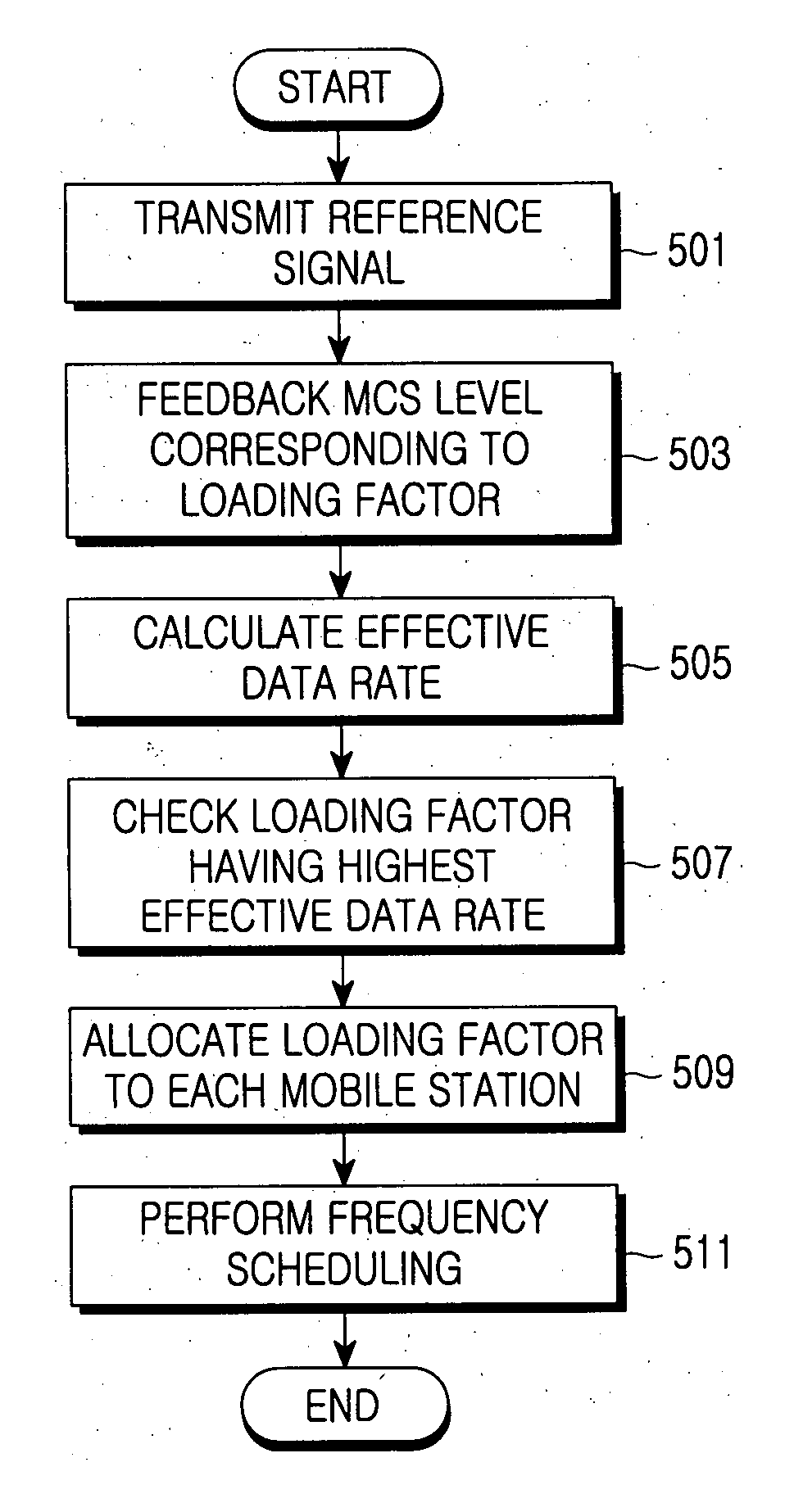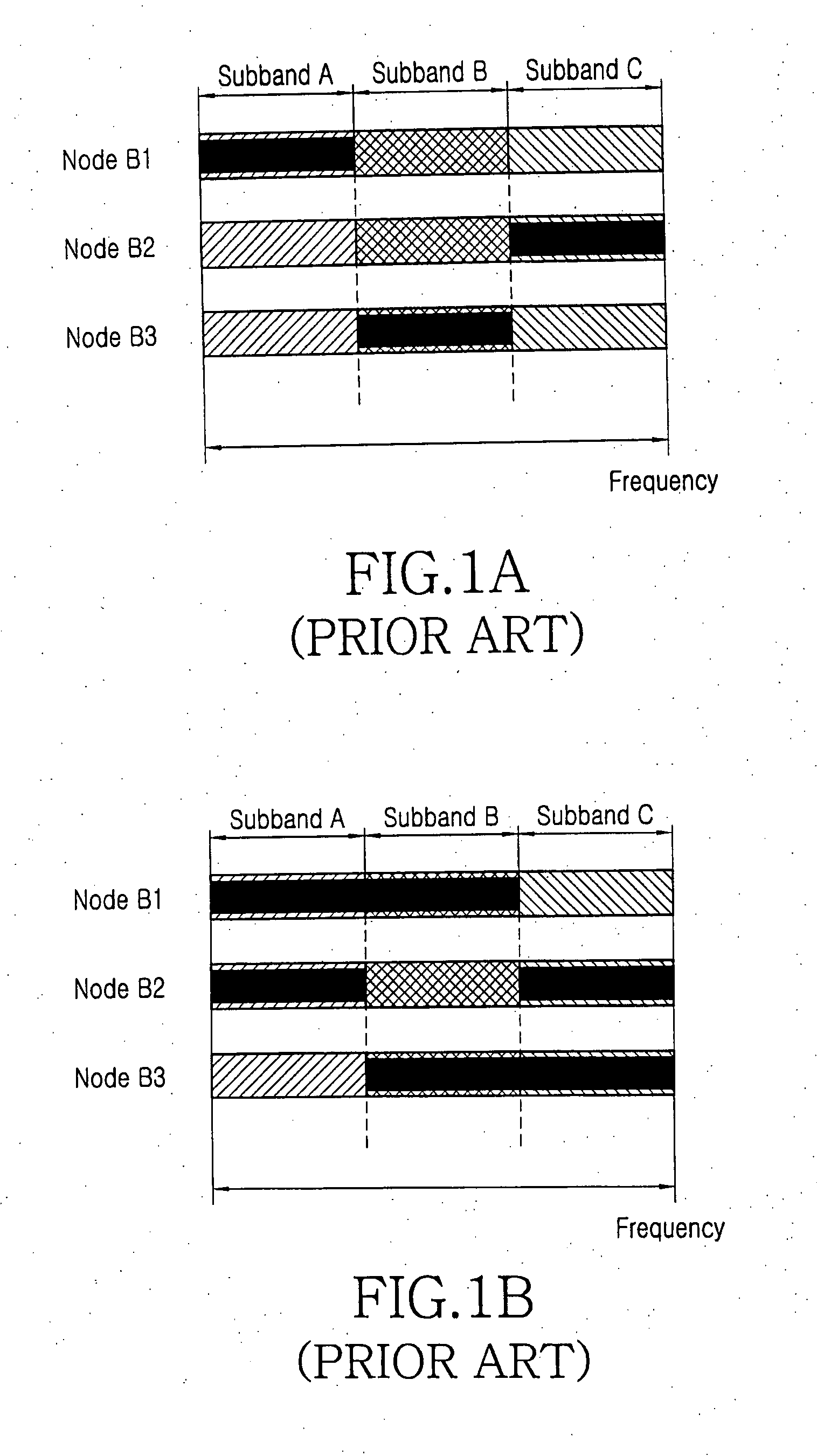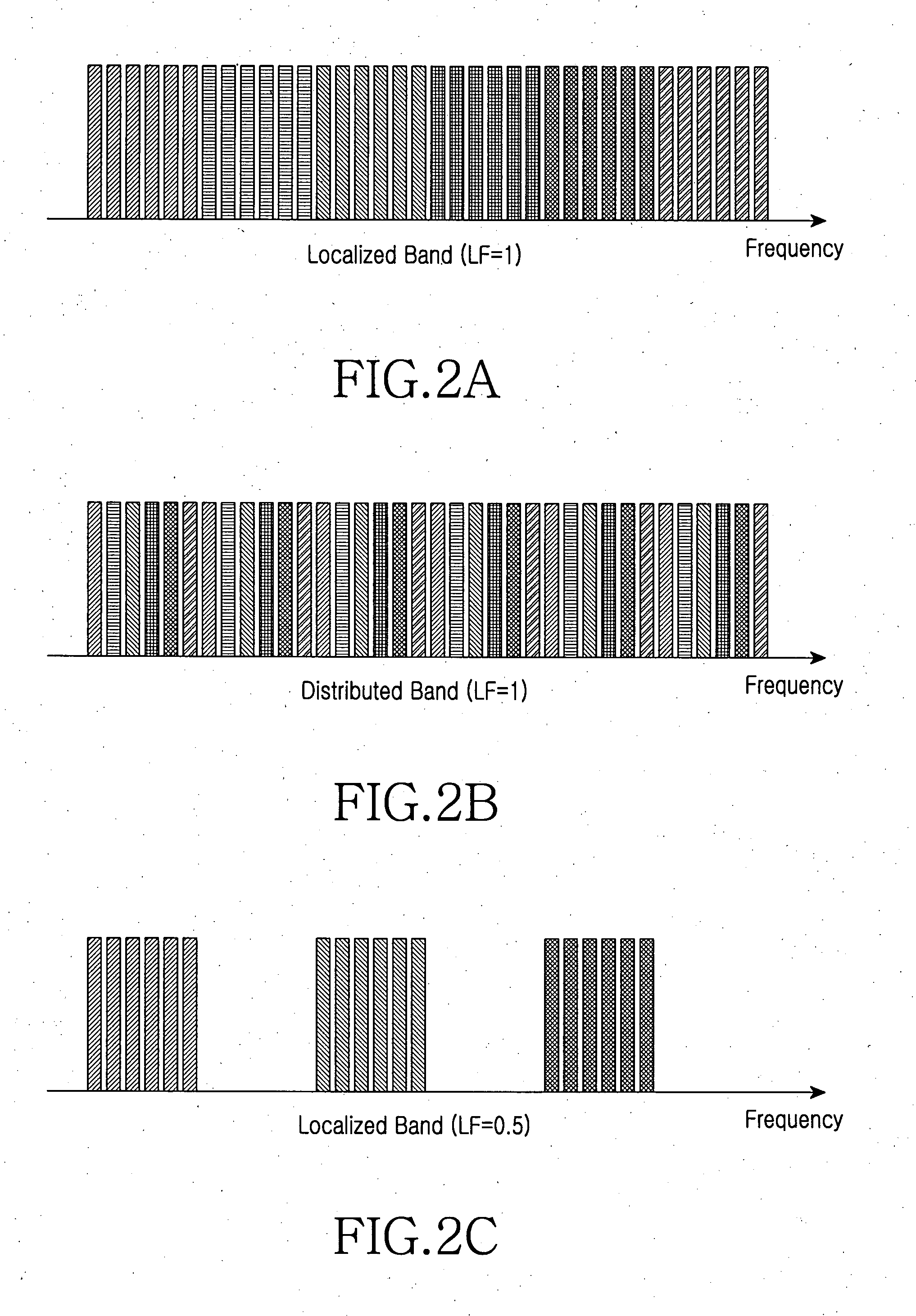System and method for allocating frequency resource in multi-cell communication system
a multi-cell communication system and resource allocation technology, applied in the field of multi-cell communication systems, can solve the problems of increasing system capacity, inter-cell interference in multi-cell communication systems, ici, etc., and achieve the effect of efficient management of the loading factor of each mobile station
- Summary
- Abstract
- Description
- Claims
- Application Information
AI Technical Summary
Benefits of technology
Problems solved by technology
Method used
Image
Examples
Embodiment Construction
[0041] Hereinafter, one exemplary embodiment according to the present invention will be described with reference to the accompanying drawings. In the following description, detailed description of known functions and configurations will be omitted when it may obscure the subject matter of the present invention.
[0042] The configurations described in the specification and depicted in the figures are represent most preferred embodiments of the present invention, and do not show all of the technical aspects of the present invention. So, it should be understood by an artisan of ordinary skill in the art that there might be various equivalents and modifications that may replace them.
[0043] The present invention provides a method for Channel Quality Information (CQI) feedback and inter-cell interference (ICI) management in a multi-cell communication system. Particularly, the present invention provides a method for transmitting a reference signal and feeding back a Modulation and Coding S...
PUM
 Login to View More
Login to View More Abstract
Description
Claims
Application Information
 Login to View More
Login to View More - R&D
- Intellectual Property
- Life Sciences
- Materials
- Tech Scout
- Unparalleled Data Quality
- Higher Quality Content
- 60% Fewer Hallucinations
Browse by: Latest US Patents, China's latest patents, Technical Efficacy Thesaurus, Application Domain, Technology Topic, Popular Technical Reports.
© 2025 PatSnap. All rights reserved.Legal|Privacy policy|Modern Slavery Act Transparency Statement|Sitemap|About US| Contact US: help@patsnap.com



